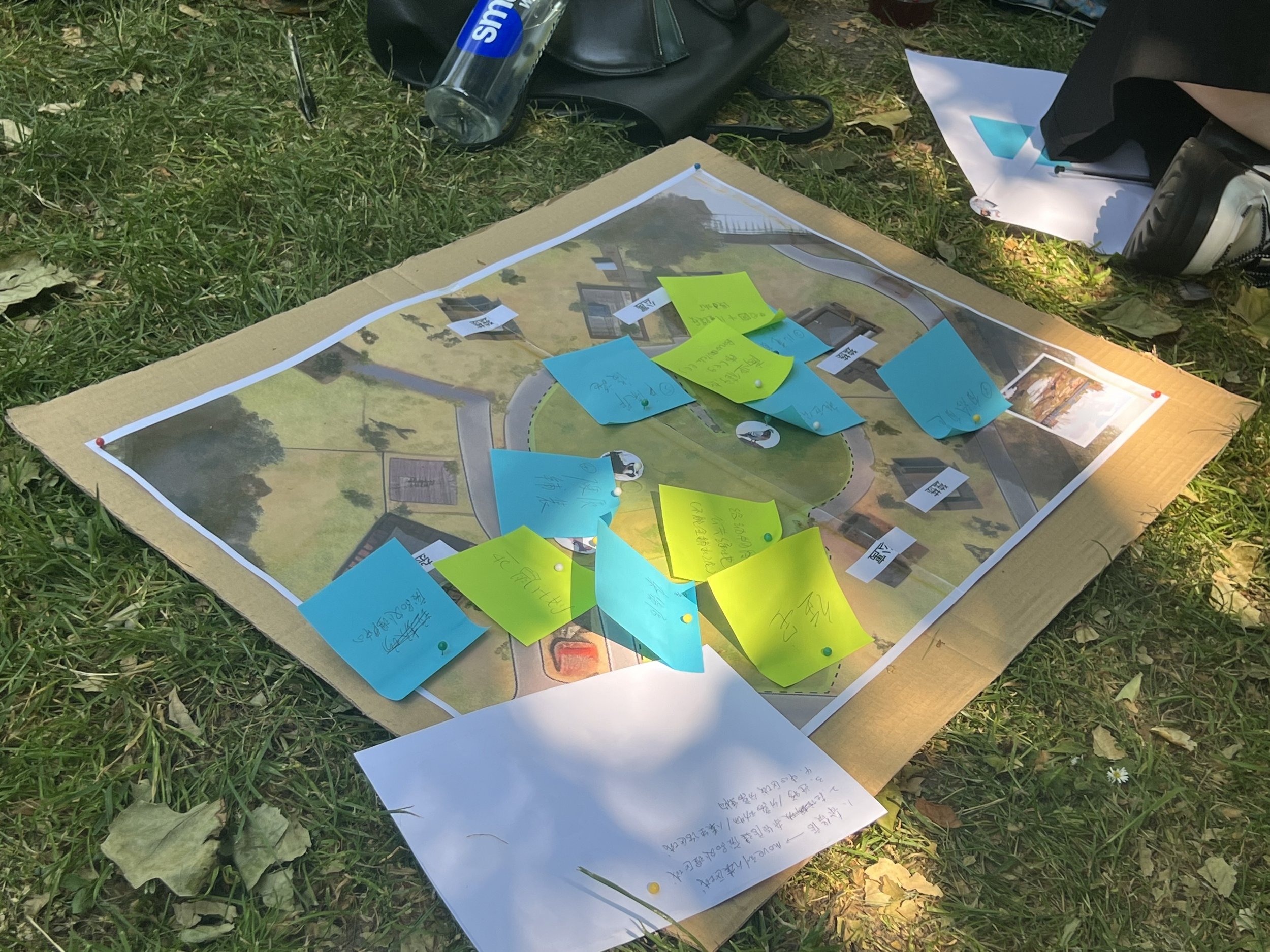
MASTER THSIS
Unseen Wildness
Citizens’ Speculation for Possible Futures of Human-Wildlife Coexisting Communities
Contexts
This research project explores the potential of role-playing simulation exercises, as a kind of serious game involving face-to-face mock decision-making, as a engagement tool to help citizens recognise the value of urban wildlife and transcend anthropocentric viewpoints and envision the potential of multi-species coexisting communities.
It aimed to encourage citizens’ action and inspire them to actively contribute to the development of cities where all inhabitants, human and non-human, can thrive together.
Timeline: Mar 2023 - Present
Master Thesis, collaborated with Socialcano on participant recruitment
Background: Wildlife Urbanisation
Rapid urbanisation leads to
Wildlife moving into cities
More interactions with wildlife
It brings conflicts
For human
Damage to property
Threat public safety
Disease transmission
For animals
Forced to leave habitats
More complicated life threats in cites
Impacts from human behaviours
But it also have good sides:
Help to preserves local species
Improve biodiversity
Strengthen resilience of urban ecosystem
Foster citizens’ respect for nature
Exploring coexistence between humans and wildlife in cities could be
an opportunity for us to find a way to conserve biodiversity, resist climate change and foster a harmonious coexistence with nature.
What leads to the conflicts?
In contemporary urban theory, modern cities are often perceived as purified environments constructed exclusively by and for human existence. This perspective disregards the presence and needs of nonhuman entities, reflecting a deep-rooted anthropocentrism prevalent in urban planning, which make human- wildlife interactions within cities more of conflicts rather than harmonious coexistence.
It is this mindset that impede the establishment of a symbiotic relationship, a coexistence where all species can flourish.
What should we do?
Citizens need to recognise the value of urban wildlife and transcend anthropocentric viewpoints.
By envisioning the potential of multi-species coexisting communities, we can better understand our shared urban future.
This expanded perspective is not just about understanding, but about encouraging action, inspiring each of us to actively contribute to the development of cities where all inhabitants, human and non-human, can thrive together.
Question
How could we help citizen recognise the value of wildlife within the urban environment and go beyond anthropocentrism to envision the possible futures of coexisting communities?
Role-Playing Game
Role-play works by establishing a simulated reality, and it is the innate tension between the tangible and the imaginary, the existent and the conjectural, that plays a critical role in fostering the senses of engagement and detachment, which open the door to new insights and behaviours for imagining possible futures of human-wildlife coexisting communities.
I believe employing a role-playing game approach serves as an effective method for incorporating both human and non-human perspectives into citizens’ co-speculation.
To apply that in the context, I designed this role-playing strategy game to simulate a complex urban ecosystem, teeming with human characters and wildlife. The game’s narrative centres around transforming a neglected urban wasteland, laying a foundation for conflicting interests among the characters. This conflict acts as a stimulating catalyst, encouraging thought-provoking dialogue and strategy in the workshop.
To enhance its immersive and interactive nature, I created a range of materials. And I researched the six wildlife typically found in London, analysing current data on their habitats, behaviour, and interactions with the urban environment. These insights were then carefully incorporated into the game's design to make it more detailed.
Character Cards
A detailed profile of each character
Backdrop for the individual's motivations, personality, and goals
Community Map
Serves as the central platform where the impacts of player decisions become visible
Character Props
Unique items tied to the characters’ knowledge or abilities
Animal tokens with different influences
Workshop
In the workshop, a diverse group of participants, encompassing professionals and students from fields as varied as business consultancy, actuarial science, geography, landscape design, and philosophy, embarked on an extraordinary role-playing game journey.
This prototype game allowed them to assume dual roles of humans and animals, an innovative feature that provoked deeper understanding and empathy.
The game served as a powerful metaphor for the imbalanced power dynamics between humans and wildlife in real-world communities. As the participants navigated the game, they became acutely aware of this imbalance, leading them to question and ultimately transcend the limiting bounds of anthropocentrism. The realisation that a harmonious coexistence could not be achieved within such a mindset was profound and stirring.
The participants' immersion in both human and animal perspectives fostered empathy and drove home the critical need for a balance between the two. While the game is still in its prototype stage, it successfully stirred the participants' consciousness and propelled them to naturally consider the perspective of animals in their strategies.
There is still room for refinement to fully utilise this game as a tool for developing possible coexisting patterns.
For future practice, I’m planning to tailor the game to the specificities of real communities. By working collaboratively with local residents in a series of workshops, the development of context- specific strategies could occur. This could be the foundation of a co-creation pilot, providing valuable insights into how effective this approach might be in promoting symbiotic urban communities.














